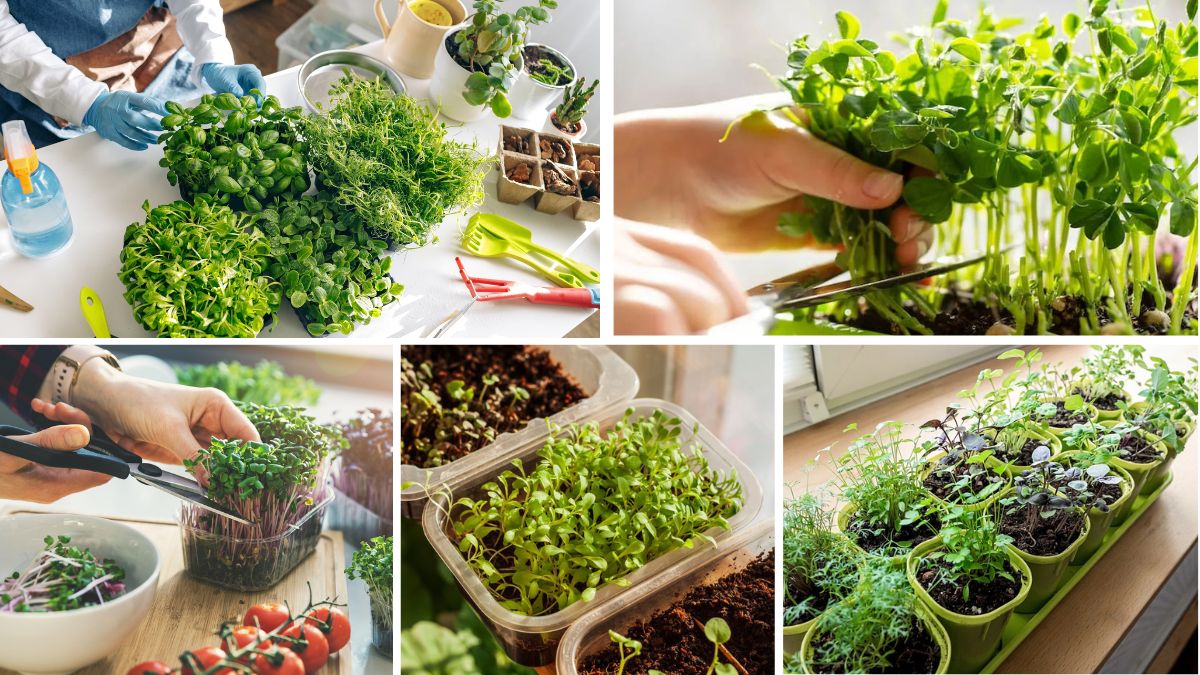Microgreens may be tiny in size, but they are giants when it comes to flavor, nutrition, and versatility. Packed with vitamins, minerals, and antioxidants, these young seedlings of vegetables and herbs are harvested just 7–21 days after germination. The best part? You don’t need a large garden or perfect weather to grow them — they thrive indoors all year round with just a little light, warmth, and care. Whether you live in an apartment, have limited outdoor space, or simply want fresh greens at your fingertips, growing microgreens indoors is an easy, fast, and rewarding way to boost your meals with fresh, nutrient-dense ingredients.
Below are some of the most popular and tasty edible microgreens you can enjoy fresh from your indoor garden — in every season.
1. Sunflower Microgreens
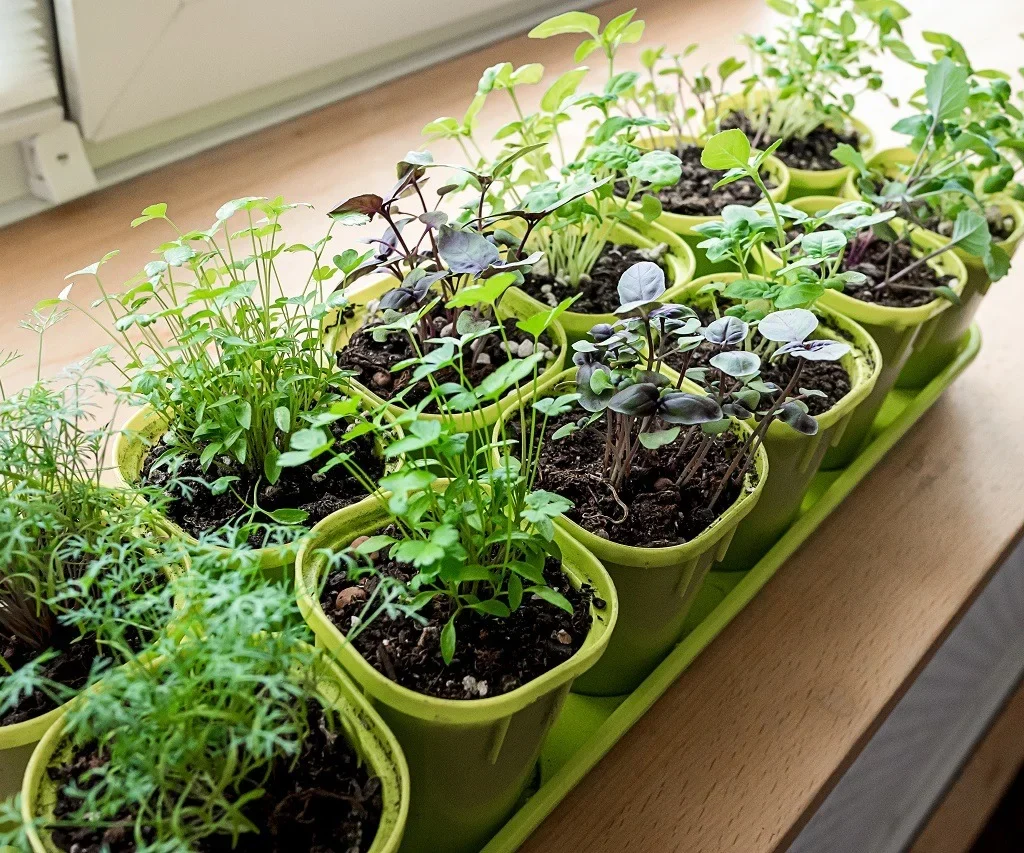
Sunflower microgreens are crisp, nutty, and slightly sweet — perfect for salads, sandwiches, or just snacking. They are also rich in protein, iron, and vitamins A, B, D, and E. To grow them indoors, soak the seeds for 8–12 hours before planting in a shallow tray filled with organic potting mix or coconut coir. Keep them in bright, indirect sunlight or under a grow light. Water gently to keep the soil moist but not soggy, and harvest when the first true leaves appear — usually within 7–10 days. These greens are hearty and crunchy, making them a favorite for adding texture to meals.
2. Pea Shoots
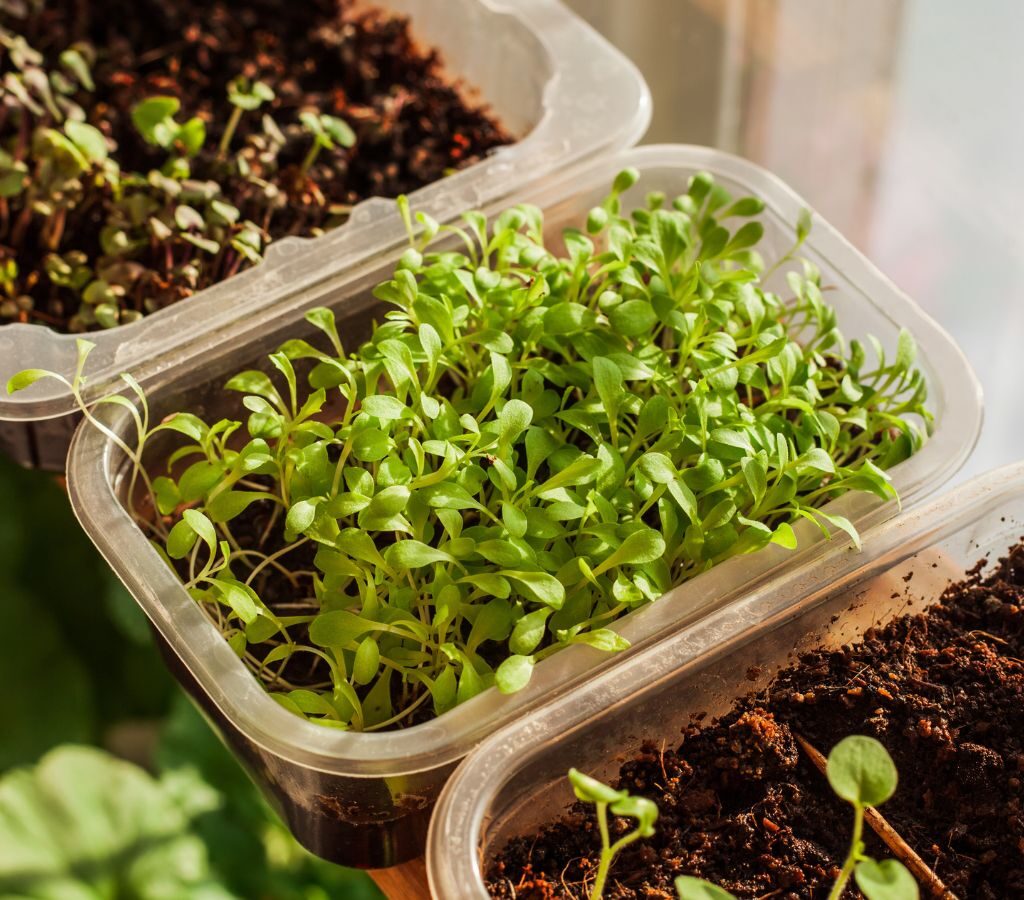
Pea shoots are the tender young growth of pea plants, with a sweet, fresh flavor reminiscent of spring peas. They are loaded with vitamin C, folate, and antioxidants. To grow pea shoots indoors, choose varieties like sugar snap peas or snow peas. Soak the seeds for 6–8 hours, then scatter them over your growing medium. Keep them moist and in bright light. Within 10–14 days, you’ll have lush, leafy shoots ready for harvest. Cut just above the soil line and add them to stir-fries, soups, or sandwiches for a burst of freshness.
3. Radish Microgreens
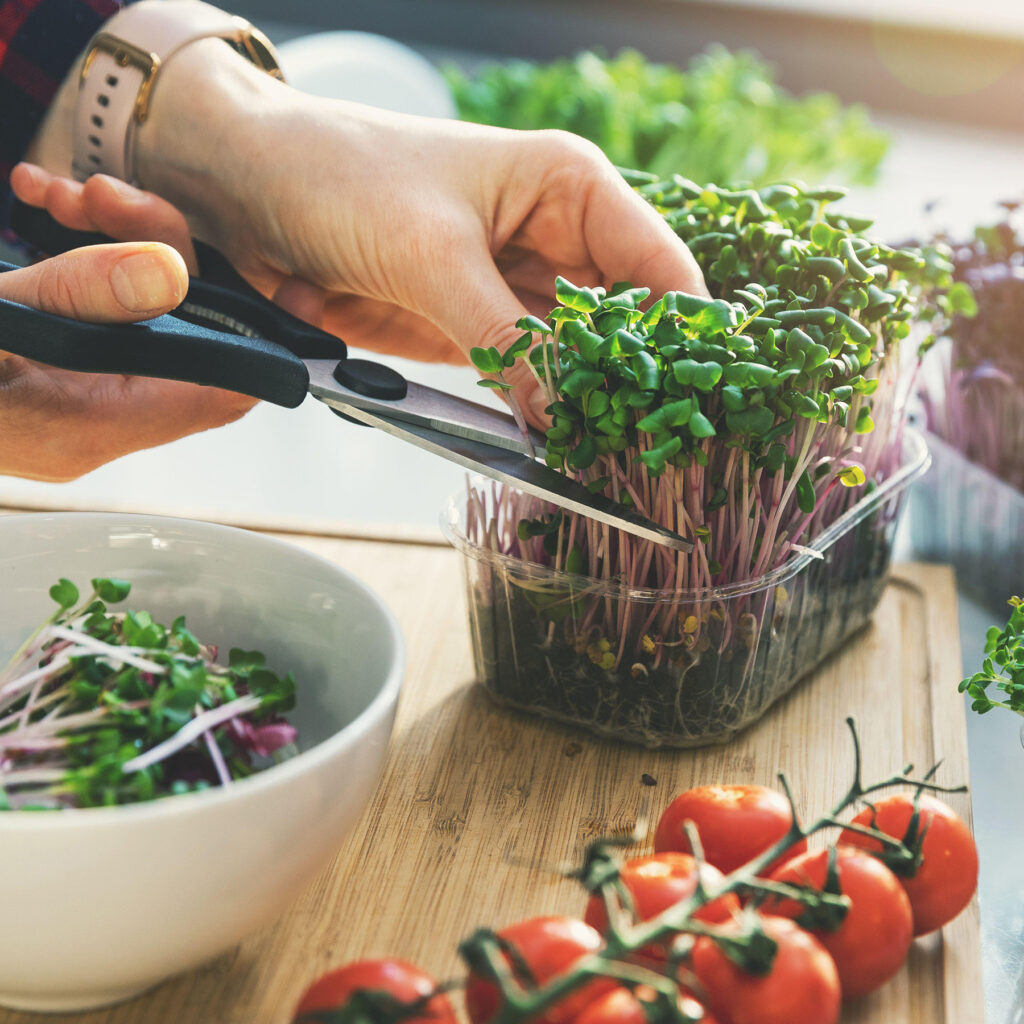
If you like a peppery kick, radish microgreens will become your go-to choice. These vibrant greens are packed with vitamin C, potassium, and a host of antioxidants. They grow extremely fast — often ready in just 6–8 days. Simply sprinkle radish seeds over your tray, mist daily, and keep them in a well-lit area. Their bright green leaves and pink stems also make them visually appealing as a garnish. Use them in salads, tacos, or as a spicy topping for avocado toast.
4. Broccoli Microgreens
Broccoli microgreens are mild, slightly earthy, and incredibly nutrient-rich — especially high in sulforaphane, a compound linked to anti-inflammatory and detoxifying benefits. They are also one of the easiest microgreens to grow indoors. Spread seeds evenly over your moist growing medium, press lightly, and cover with a thin layer of soil or a humidity dome for the first 2–3 days. Keep them in bright light after germination, and you’ll be ready to harvest within 10–12 days. Broccoli microgreens blend beautifully into smoothies, salads, and grain bowls.
5. Basil Microgreens
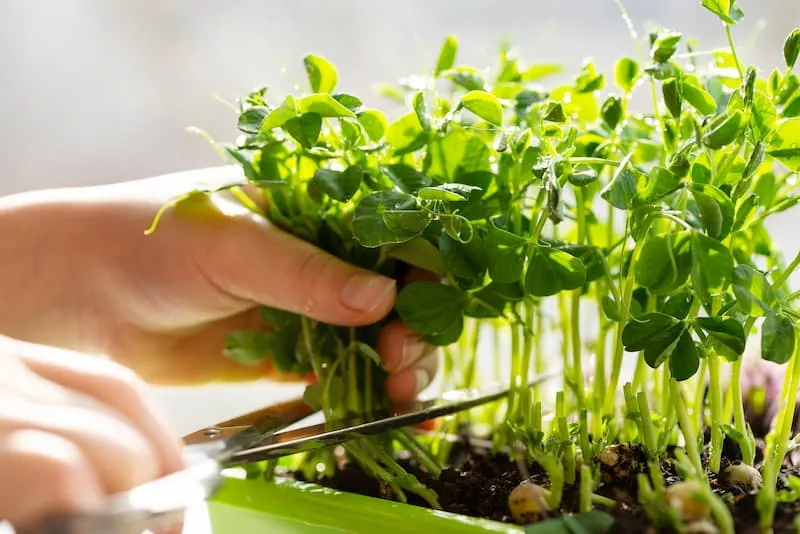
Basil microgreens bring intense flavor in a tiny package — sweet, aromatic, and perfect for adding an herbal punch to pizzas, pasta, and sandwiches. They’re rich in vitamin K, iron, and antioxidants. Basil seeds are smaller than most microgreen seeds, so sprinkle them lightly over moist soil and press gently without covering too deeply. Because basil prefers warmth, keep your trays in a warm location (70–75°F) or use a heat mat. Harvest when they have 2–4 sets of leaves, usually in 12–16 days.
6. Mustard Microgreens
Mustard microgreens deliver a spicy, horseradish-like flavor that adds a zing to any dish. They grow quickly — often within 5–7 days — and require minimal care. Simply scatter seeds over your medium, mist them twice daily, and place them in bright light after germination. Mustard greens are high in vitamins A, C, and K, as well as minerals like calcium and magnesium. Use them in wraps, salads, and Asian-inspired dishes for a flavorful boost.
7. Cilantro Microgreens

Cilantro microgreens have the same refreshing, citrusy taste as mature cilantro but are more delicate and concentrated in flavor. They require a bit more patience — taking around 14–20 days to mature — but the payoff is worth it. To grow them successfully, gently crush the seed husks before planting to encourage germination. Keep them in bright light and maintain steady moisture. Cilantro microgreens shine in tacos, curries, and fresh salsas.
8. Amaranth Microgreens
Amaranth microgreens are visually stunning with their vibrant magenta or red stems and leaves. They have a mild, earthy flavor and are rich in vitamins C, K, and E, as well as protein. These microgreens are best grown under indirect light or LED grow lights, as their delicate leaves can wilt in harsh sunlight. They mature in about 10–12 days and are often used as a garnish to add both color and nutrition to salads, soups, and gourmet dishes.
Indoor Growing Tips for Year-Round Success
Growing microgreens indoors is simple, but a few best practices can help you achieve maximum yield and quality all year long:
- Choose the Right Growing Medium – Use organic potting soil, coconut coir, or hemp mats for clean, healthy growth.
- Provide Adequate Light – A sunny windowsill works, but grow lights ensure consistent results regardless of the season.
- Control Temperature and Humidity – Most microgreens thrive between 65–75°F with moderate humidity.
- Water Wisely – Mist daily to keep the soil evenly moist but avoid waterlogging, which can cause mold.
- Harvest at the Right Time – Cut microgreens when the first true leaves appear for the best flavor and texture.
- Experiment with Blends – Mix seeds like radish, broccoli, and sunflower for colorful, flavorful microgreen mixes.
Conclusion
Microgreens are the perfect solution for fresh, homegrown nutrition all year long — even if you live in a small apartment or have no outdoor space. With minimal investment in seeds, trays, and light, you can enjoy an ongoing supply of flavorful, nutrient-packed greens right from your kitchen counter. From spicy mustard to sweet pea shoots, these edible microgreens not only elevate your meals but also add a vibrant touch of greenery to your indoor space. Once you start growing them, you’ll wonder how you ever lived without this quick, delicious, and sustainable source of fresh food.
